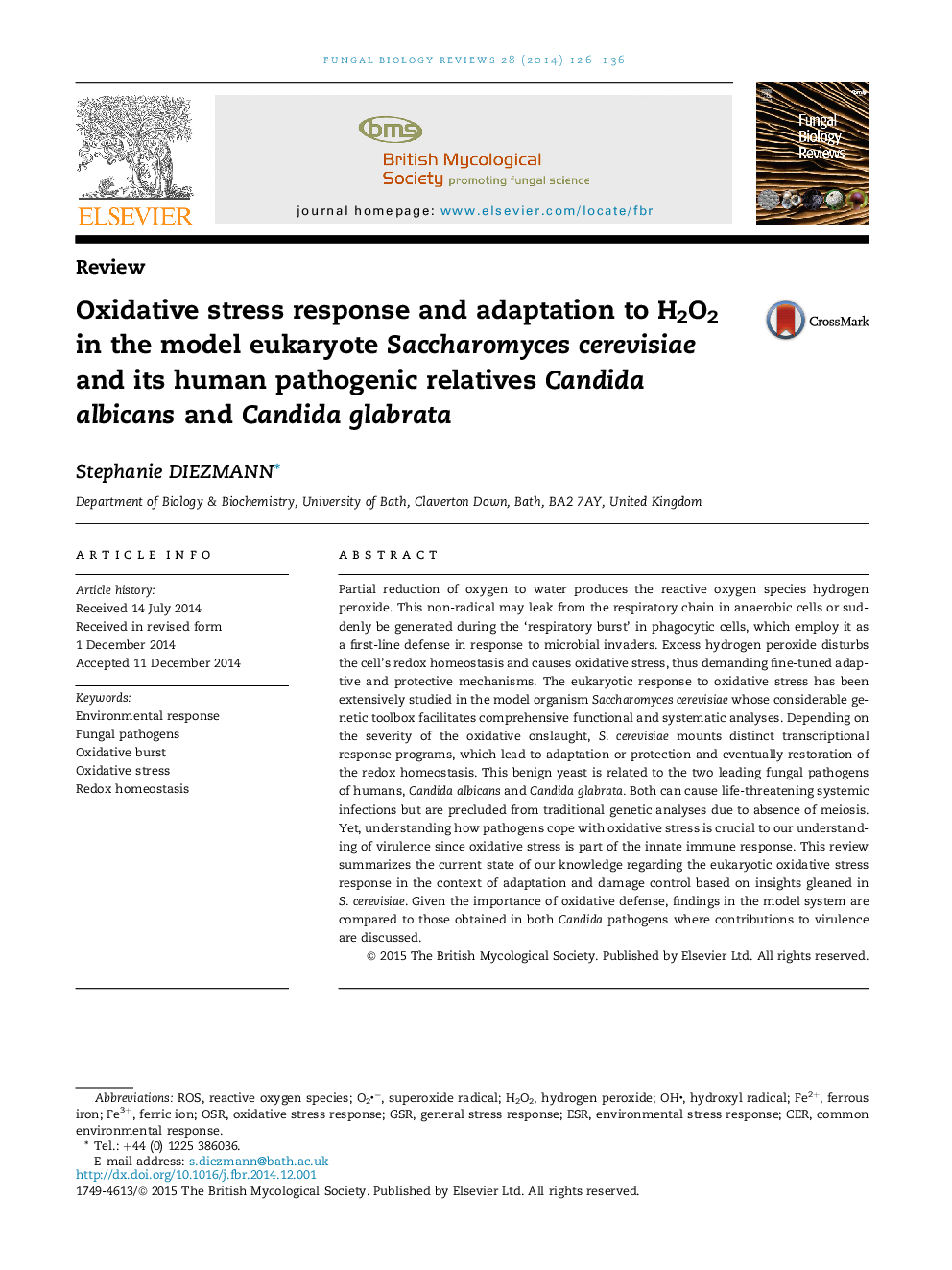| Article ID | Journal | Published Year | Pages | File Type |
|---|---|---|---|---|
| 2180499 | Fungal Biology Reviews | 2014 | 11 Pages |
Partial reduction of oxygen to water produces the reactive oxygen species hydrogen peroxide. This non-radical may leak from the respiratory chain in anaerobic cells or suddenly be generated during the ‘respiratory burst’ in phagocytic cells, which employ it as a first-line defense in response to microbial invaders. Excess hydrogen peroxide disturbs the cell's redox homeostasis and causes oxidative stress, thus demanding fine-tuned adaptive and protective mechanisms. The eukaryotic response to oxidative stress has been extensively studied in the model organism Saccharomyces cerevisiae whose considerable genetic toolbox facilitates comprehensive functional and systematic analyses. Depending on the severity of the oxidative onslaught, S. cerevisiae mounts distinct transcriptional response programs, which lead to adaptation or protection and eventually restoration of the redox homeostasis. This benign yeast is related to the two leading fungal pathogens of humans, Candida albicans and Candida glabrata. Both can cause life-threatening systemic infections but are precluded from traditional genetic analyses due to absence of meiosis. Yet, understanding how pathogens cope with oxidative stress is crucial to our understanding of virulence since oxidative stress is part of the innate immune response. This review summarizes the current state of our knowledge regarding the eukaryotic oxidative stress response in the context of adaptation and damage control based on insights gleaned in S. cerevisiae. Given the importance of oxidative defense, findings in the model system are compared to those obtained in both Candida pathogens where contributions to virulence are discussed.
